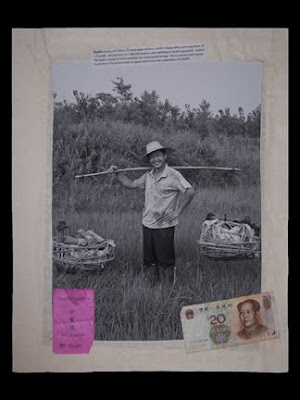 |
| Entering The Rabbit Hole |
The Rez'-A-Vision Profect is a video presentation of still "manipulated" images utilizing associations from "Alice In Wonderland" and "Through the Looking Glass" by Lewis Carroll while taking a journey through the Osage Indian Reservation. Lewis Carroll was writing about what is reality and living on an Indian reservation begs those same questions. The federal government recognizes the reservation as established by the tribe's purchase of the land and treaties whereas the state says that the reservation has ceased to exist.
I live where my great-grandfather built a cabin before there was a state and then so that they could have a state they officially gave him the land that he lived on. Many Osages were married to non-Osages so that children could be "produced" and spouses murdered so the Osage spouse's oil headright could be kept for the Indian children by their non-Osage parent. During the period of the murders my great-grandfather escaped to New Mexico. Escaping was nothing new for him, at age 12 he had escaped from Carlisle Indian School in Pennsylvania and with two other Indian boys walked and hopped rides on railroads across the country back to the reservation, traveling at night to avoid being caught and sent back. He had tried two previous times.
True unemployment among Indians on reservations is typically over 25% and the country is worried that the national unemployment rate is near 10% and up to 16.5% among African-Americans and Hispanics currently. Indian Health Services supposedly has a "model" diabetes program but it doesn't decrease the rate diabetes spreads among Indians with starchy and carbohydrate rich commodity foods. The tribe is publicly trying to eliminate the illegal drug epidemic but we have drive-through liquor stores and tribal casinos that addict us to other destructive behaviors to replace our dreams.
We are down a "rabbit hole" that when others visit they can not see. They see a small rural community with a couple of souvenir shops, a few oil wells and a sign that offers to help those who can't read to learn to read, if they can read the sign. In the grocery store in the produce section however you will find bilingual signs, English and Osage, should you look closely enough. That is the last place that the buffalo hunters have reserved for them.



















































